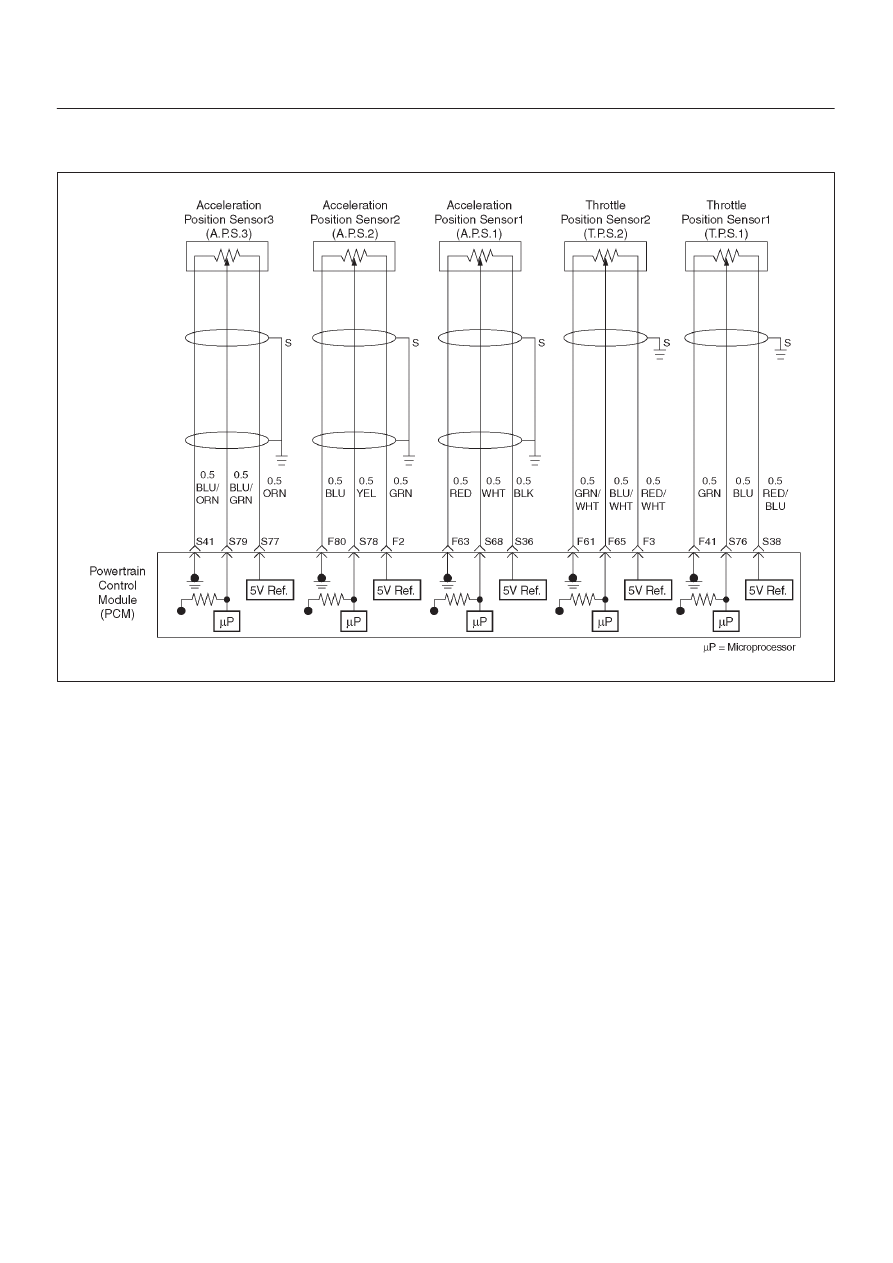Isuzu Amigo / Axiom / Trooper / Rodeo / VehiCross. Manual - part 848

6E–416
TROOPER 6VE1 3.5L ENGINE DRIVEABILITY AND EMISSIONS
Diagnosis Truble Code(DTC)
P1221 TPS1 – TPS2 correlation(Circuit Performance)
D06RY00157
Circuit Description
D
The powertrain control module (PCM) controls engine
speed by adjusting the position of the throttle control
valve (DC motor). The throttle motor is a DC motor
driven by one coil. The PCM applies current to DC
motor coil in steps (%) to adjustment the valve into a
passage in the throttle body to air flow.
This method allows highly accurate control of engine
speed and quick response to changes in engine
load.
D
The acceleration position (AP) sensor circuit provides
a voltage signal relative to acceleration pedal angle.
The acceleration pedal angle (AP1) will vary about
13% at idle position to about 87% at open
throttle(WOT).
APS signal is used to determine which DC will
adjusting throttle position.
After the APS signal has been processed by the
PCM, it will command DC motor to allow a move of
throttle position.
D
Acceleration pedal – Check for objects blocking the AP
sensor or pedal arm with spring, and excessive
deposits in the acceleration pedal arm and on the
acceleration pedal.
Diagnostic Aids
D
An intermittent may be caused by a poor connection,
rubbed–through wire insulation or a wire broken inside
the insulation. Check for poor connections or a
damaged harness. Inspect the PCM harness and
connector for improper mating, broken locks,
improperly formed or damaged terminals, poor
terminal-to-wire connection, and damaged harness.
D
Throttle body – Check for objects blocking the DC
motor or throttle bore, excessive deposits in the ETC
passage and on the valve spring, and excessive
deposits in the throttle bore and on the throttle valve
plate.